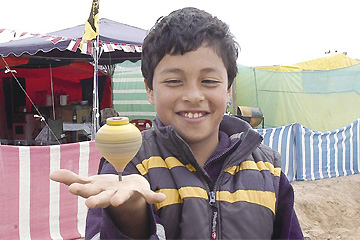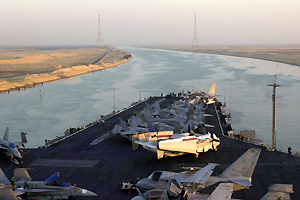Along the coastline, cities like Coquimbo and La Serena have the necessary infrastructure to enjoy its natural beauty, with outstanding hotels, a casino and international grade recreational centers. Further inland, the valleys offer their trademark peace and mysticism, which have even earned them a reputation for having supernatural energy.
The region of Coquimbo can also charm you from above. Its clear, clean skies (with minimal atmospheric alterations) allow for astronomical observation and give amateur tourists the chance to see the stars like never before, like the Southern Cross for example.
From here on, we’ll see a sample of the countless destinations this zone has to offer.
Province of Elqui
– La Serena: it is the regional capital and it stands out for its architectural beauty, which includes old colonial time buildings and a fair amount of churches that have received the category of National Monument.
The city’s historical quarter includes over 3 blocks and the National Monuments Council deemed it to be a typical zone.
This area has important constructions, such as:
– Archeological museum: standouts include its stone façade and the collections exhibited there, which belong to the molle and diaguita cultures. It also has an important library, with over 15 thousand volumes.
– Ignacio Domeyko Mineralogy Museum: it contains one of the most complete mineral samples in our country, as well as a collection gathered by scientist Ignacio Domeyko during the XIX century.
– San Francisco Church: its construction dates back to 1563 and its style is a faithful depiction of Hispanic America’s architecture at the end of the XVI century. It is considered to be one of the oldest in Chile and due to its characteristics, it was declared a National Monument in 1977.
– Catedral church: it began construction in 1842, mainly using wood and stone. It has masonry made in olivillo wood and was declared a National Monument in 1981.
The coastal strip also offers important attractions. During the nineties, there was a significant real estate boom in the Avenida del Mar, making it one of the reference points for tourism in the region.
Another one of the most recognizable postcard images of this city is the Faro Monumental (Monumental Lighthouse), located along the shore, at the intersection of Francisco de Aguirre and del Mar avenues. It was built by the Chilean Navy in 1950 and is 28 meters tall. It is currently only used for tourism.
– Coquimbo: it is an old port with a rich history, which goes from remains of the first inhabitants to tales of pirates that still linger among the population.
Among the buildings that stand out is the Guayacan church, located at La Herradura bay. Its structure is made completely out of metal and was built by Frenchman Gustave Eiffel. It was declared a National Monument in 1977.
Another standout is the Cruz del Tercer Milenio (Third Millenium Cross), which is 93 meters tall and offers a beautiful view of the bay of Coquimbo. Built in iron and reinforced concrete, it was inaugurated on May 5th, 2000, in order to coincide with the 2,000th celebration of the birth of Christ.
Another important construction, which faces the Third Millenium Cross, is the Mohammed VI Islamic Cultural Center for the Dialogue Between Civilizations, better known as the “mosque of Coquimbo”. Its construction began in 2004 and it is located atop Dominante hill. Its design was in the hands of Moroccan architect Faisal Cherradi.
– Chungungo: fishing cove of no more than 400 inhabitants that is known for implementing a project that takes advantage of the hydro resources that come from the camanchaca. There, we find mist-catchers and system of pipes and tanks that are capable of storing nearly 13,000 liters of water a day.
– Elqui valley: it is located approximately 90 km southeast of La Serena. It is one of the most visited tourist destinations in the region, because, apart from the natural beauty it gets from its vineyards, it also offers an assortment of fun activities for those that enjoy agro-tourism, meditation, recreational activities, astronomical observation, etc.
– Vicuña: it is located nearly 60 km east of the regional capital. It is recognized as the main city located in the Elqui river valley. It also has undeniable historical importance, for it is the place where Gabriela Mistral lived, the winner of the Nobel prize in Literature.
It has four important museums: the Gabriela Mistral museum, the Vicuña Entomological and Natural Science museum, the Elqui Historical Museum and the Solar de Madariaga Antique Museum.
It also has an architectural icon, as is the Bauer Tower.
– Montegrande: this town was declared a Typical Zone in 1990.
Gabriela Mistral’s grave is located here. One may also visit the school where the poet was a teacher, which has been turned into a museum.
– Andacollo: it is located 56 km southeast of La Serena, at over 1,000 masl. With a rich mining history, copper and gold are still exploited here. It has preserved the old tools that were used for processing minerals, such as the maray and the trapiche.
In addition, every year, the festivity of the Virgen del Rosario de Andacollo transforms this town as it receives thousands of faithful.
The Museo de la Virgen is also found here, which dates back to the XVII century and it houses some of the offerings made by the pilgrims.
Province of Limari
– Ovalle: it is located 88 km southeast of La Serena. Standouts among its tourist attractions include the San Vicente Ferrer church, which was declared a Historical Monument in 1981; the Limari Museum, which has one of the most important collections of diaguita pottery and the Feria Modelo, catalogued as the biggest agricultural fair in our country.
– Encanto valley: it is a highly important archeological spot, because one may appreciate the presence of the Molle culture, spread out among petroglyphs and tacitas stones. The spot was declared a Historical Monument in 1973.
– Combarbala: location founded in 1789 and which is known for the work performed by its artisans using combarbalite stone. In addition, from here, one may visit the Rincon Las Chilcas petroglyphs, the Cogoti valley, and respects may be rendered to the Virgen de Piedra (Stone Virgin). This last one is located at La Isla, 22 km from Combarbala, and it is enclosed among rocks, receiving the visits of thousands of faithful year round.
Province of Choapa
– Illapel: it is located next to the Illapel river, 60 km northeast of Los Vilos. It has old and beautiful constructions, some made from adobe, that are typically rural, with standouts that include Villaroeal house, Casas del Mirador and de la Puntilla.
– Salamanca: historically known for the legends involving witches and spells, it is a farming community, with fertile valleys that produce tobacco, sunflowers and fruit, among other plants. A few of its attractions are the Coiron suspended bridge, the Chillepin medialuna (half-moon) and the ovens used for drying tobacco.
In the last few years, the city has received a strong boost in technology, because sue to an initiative from the municipality and the Los Pelambres Mining Foundation, Salamanca became the first city in Chile with free Wi-Fi.
– Los Vilos: tourist beach town that receives visits year round. Las Conchitas beach and Playa grande beach are found here, as are Los Huevos and Los Lobos islands, where there are many birds and sea lions respectively.
From here, it is also possible to visit the Quereo archeological site, where there is evidence of ancient inhabitants from over 10,000 years ago.
– Pichidangui: popular beach community that has white sandy beaches and calm waters. The continuous erosion of the rocks caused by the sea shaped the Quintrala cavern.
Festivities in the valleys
– Festival of the Andacollo Virgin: in Andacollo, 56 km southeast of La Serena, every year in the month of December, they celebrate the festival of the Virgen del Rosario de Andacollo, one of the oldest and most popular festivities in the country.
Thousands of faithful flock to this place in order to worship their patron and enjoy Chinese dances, turbans and dancers, forming brotherhoods and groups. They all escort the image of the Virgin (also called “Chinita”) to the beat of rattles, flute, boxes and cymbals.
It has two stages. The first is known as the Fiesta Chica (Small Festivity), and is held on the first Sunday of October; meanwhile, the second one, the Fiesta Grande (Big Festivity), is held between December 24th, 25th and 26th.
– La Fiesta del Niño de Sotaqui (The Sotaqui child festivity): it is a religious commemoration that dates back to the XIX century and it honors Baby Jesus, including a wooden image of him that is nearly 40 cm tall and which is holding a 5 cm in diameter gold sphere in one of his hands, representing the world.
Although it used to be held every January 6th, as of 1966 the holiday was changed to the Sunday following the old date to make the pilgrimage of faithful easier.
– Fiesta de La Pampilla (La Pampilla Festival): from September 17th to the 21st, an event is celebrated in Coquimbo that combines Chilean traditions, typical food, and a festival that has had internationally renowned artists in the last few years.
It is believed that the celebration dates back to 1864, the year in which military exercises began to be performed in the area, which attracted many people during the National Holiday Season.
However, other versions state that the origin of this celebration comes from the victory obtained by the locals in the fight against corsair Bartolome Sharp, or from the celebrations held in the port of Coquimbo after its people heard, two days late, of the installment of the first Government junta in 1810.
It is considered the most important popular festivity in Chile.








